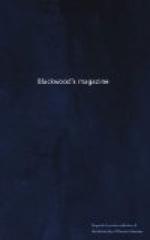when Aratus was exerting himself to gain for the Achaean
league the powerful alliance of Ptolemy Euergetes,
he found no means so effectual in conciliating the
good-will of the monarch, as the procuring for him
some of the master-pieces of Pamphilus[7] and Melanthius,
the most renowned of the famous school of Sicyon;
and the knowledge of the high estimation in which
the arts were held, under the Egyptian kings, gives
an additional value to the accounts given by Tatius
of these treasures of a past age, his notices of which
are the latest, in point of time, which have come
down to us from an eyewitness. We have already
quoted the author’s vivid description of the
painting of Europa at Sidon—we shall now
subjoin, as a pendant to the former notice, his remarks
on a pair of pictures at Pelusium:—
[7] Pamphilus was a Macedonian by birth, and a pupil of Eupompus, the founder of the school of Sicyon; to the presidency of which he succeeded. His pupils paid each a talent a year for instruction; and Melanthius, and even Apelles himself, for a time, were among the number.—Pliny, Hist. Nat. xxxv. 36. The great talent of Melanthius, like that of his master Pamphilus, lay in composition and grouping; and so highly were his pictures esteemed, that Pliny, in another passage, says, that the wealth of a city would hardly purchase one.
“In this temple (of Jupiter Casius) were two famous works of Evanthes, illustrative of the legends of Andromeda and Prometheus, which the painter had probably selected as a pair, from the similarity of the Subjects—the principal figure in each being bound to a rock and exposed to the attack of a terrific animal; in one case a denizen of the air, in the other a monster of the sea; and the deliverers of both being Argives, and of kindred blood to each other, Hercules and Perseus—the former of whom encountered, on foot, the savage bird sent by Jove, while the latter mounted on borrowed wings into the air, to assail the monster which issued from the sea at the command of Neptune. In the picture of Andromeda, the virgin was laid in a hollow of the rock, not fashioned by art, but rough like a natural cavity; and which, if viewed only with regard to the beauty of that which it contained, looked like a niche holding an exquisite fresh from the chisel; but the sight of her bonds, and of the monster approaching to devour her, gave it rather the aspect of a sepulchre. On her features extreme loveliness was blended with deadly terror, which was seated on her pallid cheeks, while beauty beamed forth from her eyes; but, as even amid the pallor of her cheeks a faint tinge of colour was yet perceptible, so was the brightness of her eyes, on the other hand, in some measure dimmed, like the bloom of lately blighted violets. Her white arms were extended, and lashed to the rock; but their whiteness partook of a livid hue, and her fingers were like those of a corpse. Thus lay she, expecting death, but arrayed like




